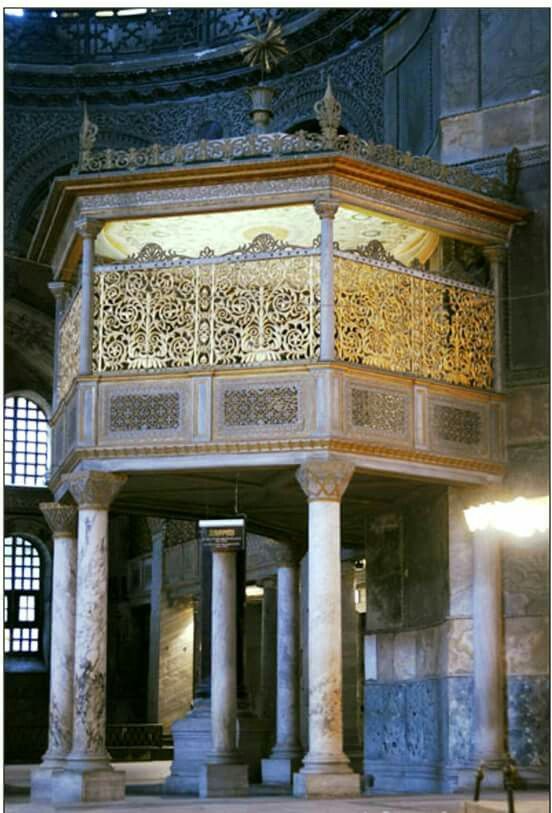
When Ottoman Sultans attended ritual prayer at an Imperial Mosque, they performed their namaz (prayers) from a raised, gilded loge, an ornately screened religious equivalent of a theatrical Royal Box.
These loges (Hünkar mahfili) led back into a secret first floor suite of rooms for the exclusive use of the Imperial family. Not only that, but in a flourish of Ottoman grandeur, these exclusive quarters were externally accessed by a magnificent ramped portico enabling the Sultan to journey from palace to prayer on horseback, ascending to his first floor pavilion without his feet touching the ground.
One of the finest examples of these exclusive Imperial suites (a ‘Hünkar Kasrı’ or ‘Sultan’s Pavilion’) can be found at Istanbul’s busy port district, Eminönü. Here the deceptively named Yeni Cami (New Mosque) has stood proudly by the waterfront for over three and a half centuries, royally greeting those making the Bosphorus crossing from Asia to shop in the busy spice bazaar next door. And it was right here in its exquisite Sultan’s quarters that my Hoca (expert teacher) Gelincik Eroğul was invited to exhibit her work, together with her students, including me!
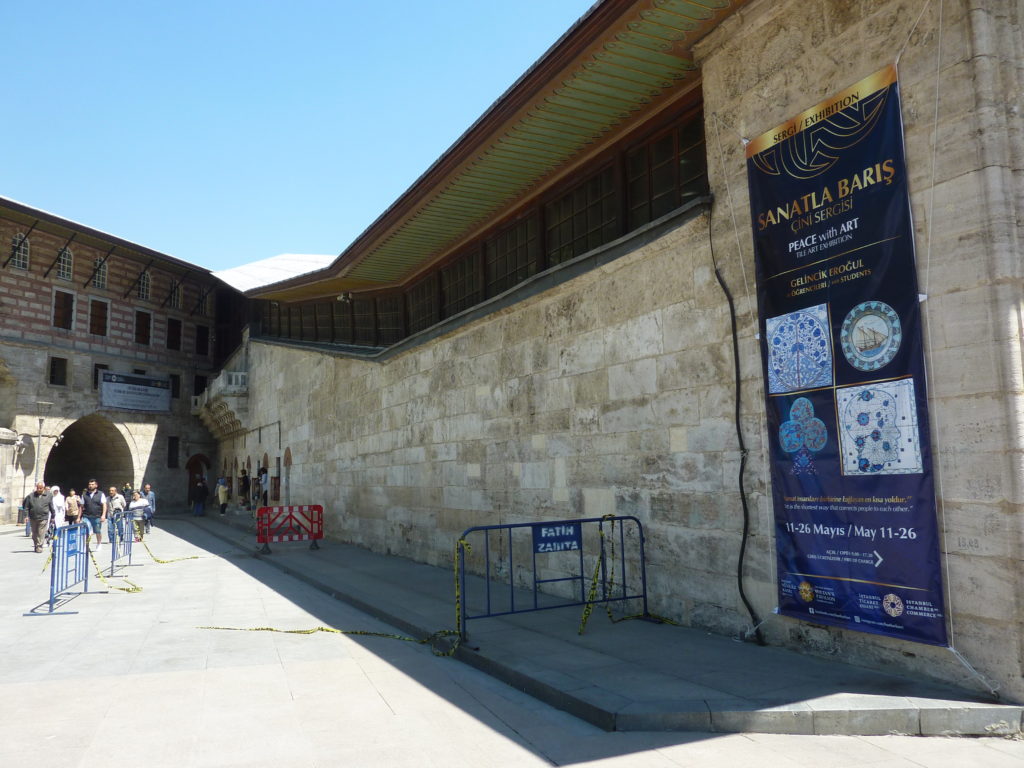
These days the New Mosque’s Sultan’s Pavilion is a building hidden in plain sight: absolutely slap bang central in the tourist hub of the city, yet miraculously tucked away from view. Although the mosque is always open, the Imperial suite with its impressive ramped entrance is only unlocked when the Chamber of Commerce host an exhibition in their temporary art space. It’s a special treat to get to take a look inside.
The temporary exhibition space is quirkily located not in the rooms of the upper Pavilion itself, as you might expect, but inside the ramped stone portico. Sadly, visitors can no longer attend on horseback(!) so you have to make the long, steep climb on foot. Predictably the steep slope presents a pretty unique challenge for curating the space and hanging artwork! Not only that, but having been designed to welcome an Imperial entourage of cantering horses, the portico is also a cavernously large space to fill… So began a series of night crossings from Asia to Europe to transport art pieces from our local borough workshop to the heart of Istanbul’s historic peninsula.
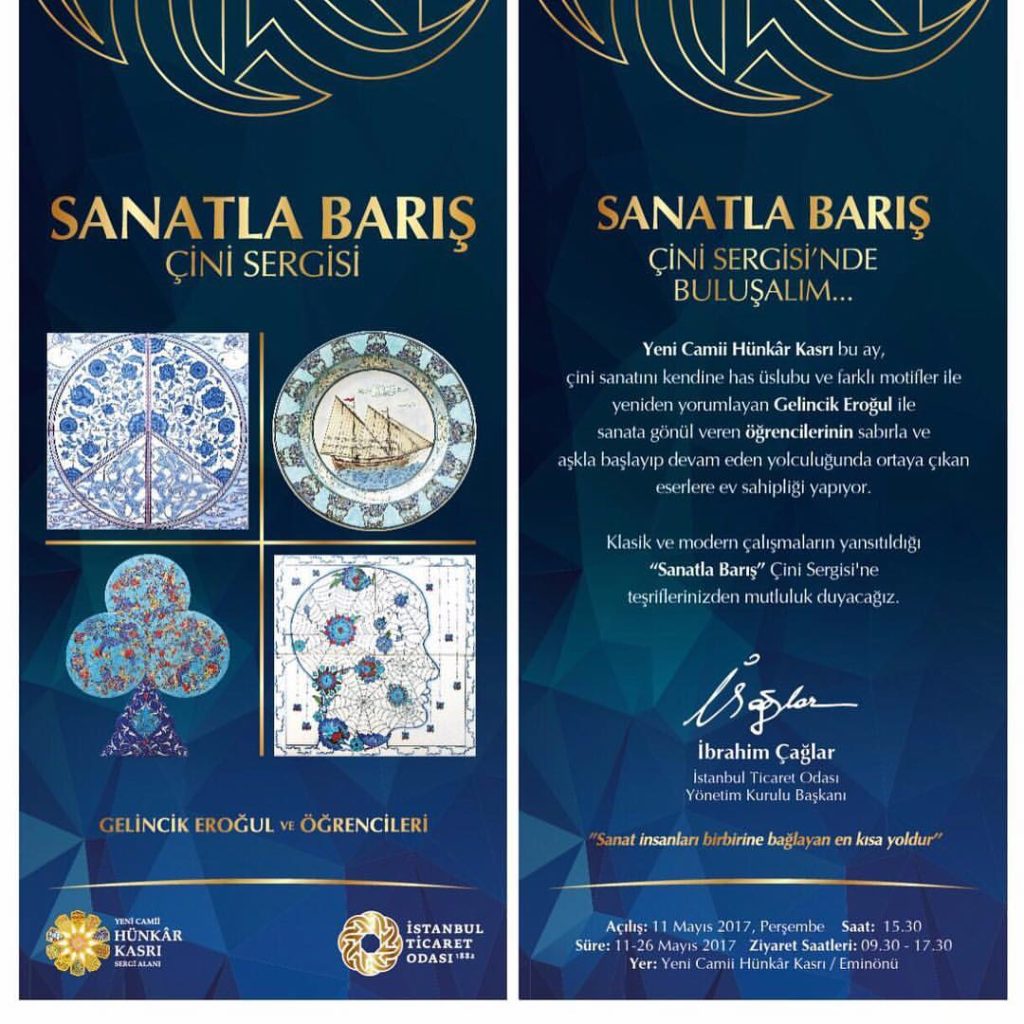
Gelincik Hoca entitled the exhibition ‘Sanatla Barış’ (‘Make Peace with Art’). Her concept was not to promote peace through artistic means. Rather the title was inspired by a residual sadness at the loss of artistic appreciation in Turkey; the tendency amongst some Turks to overlook the traditional in favour of the brand new; the neglect or looting of historic sites intead of counting artefacts and treasure as national heritage. So, ‘Sanatla Barış’ was a heartfelt plea: “Don’t part ways with art, be reconciled once more…” The concept also hinted at a warning buried within. Without this reconciliation, what tradition, heritage, craft will be lost because we refuse to steward it? What, if any, artistic legacy will our generation leave behind?
Several commission pieces that Gelincik Hoca designed for this exhibition and theme can be viewed here. (For her full catalogue of work do take a look at her pages on Facebook and Instagram where she takes commissions too.)
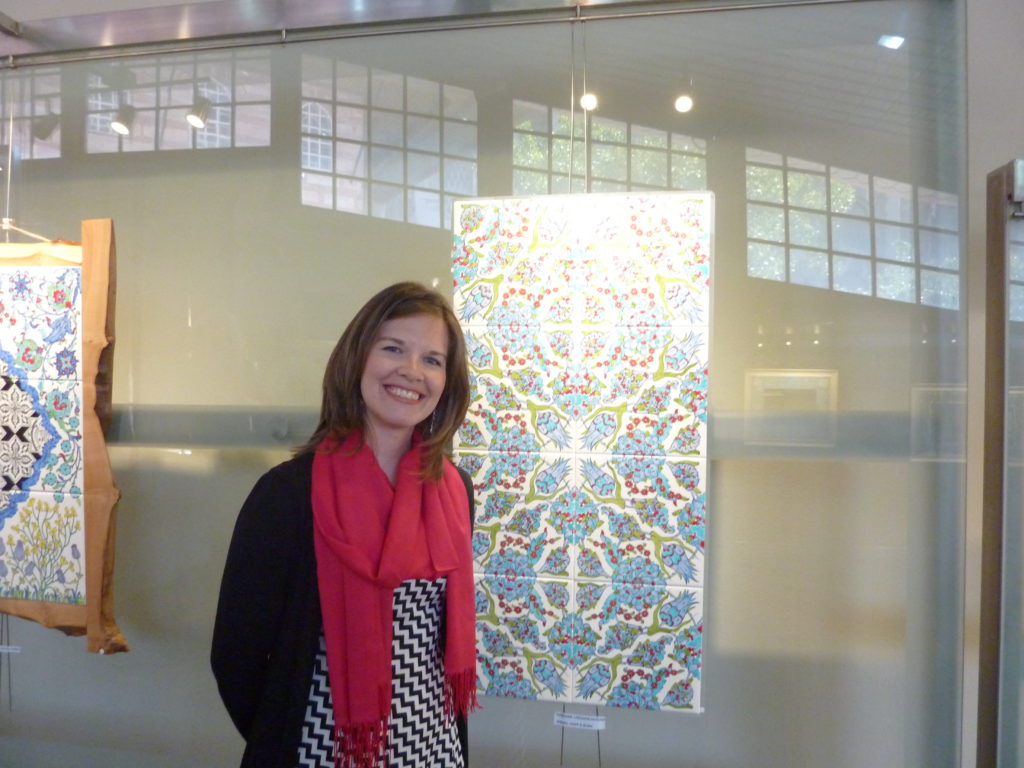
I was honoured and excited when Gelincik Hoca chose to exhibit two of my pieces in the exhibition. Although not pieces speaking to the main concept, it was important to exhibit her tutelage and expertise by including work produced in her workshop. The photos show me alongside my work in situe with links below each picture to further writing about each piece for those interested.
The New Mosque tells a compelling historic and artistic story in itself. Safiye Sultan (the reigning Sultan’s mother or Valide Sultan) commissioned the mosque to be built in 1597 for her son Sultan Mehmed III as a show of political power to the Jewish communities running that commercial area. Jews might have had commercial power, but the Sultan had politico-religious authority, and Safiye was the Sultan’s mother… Davut Ağa, apprentice to the great Architect (Mimar) Sinan, undertook the endeavour, with the baton passing to Dalıç Ahmed Çavuş when Davut died. But after Mehmed III’s death, Safiye Sultan’s influence also passed away and the mosque stood unfinished for over half a century. Sultans came and went, including ‘Mad’ Mustafa and İbrahim ‘the insane’ (or was he just incompetent?).
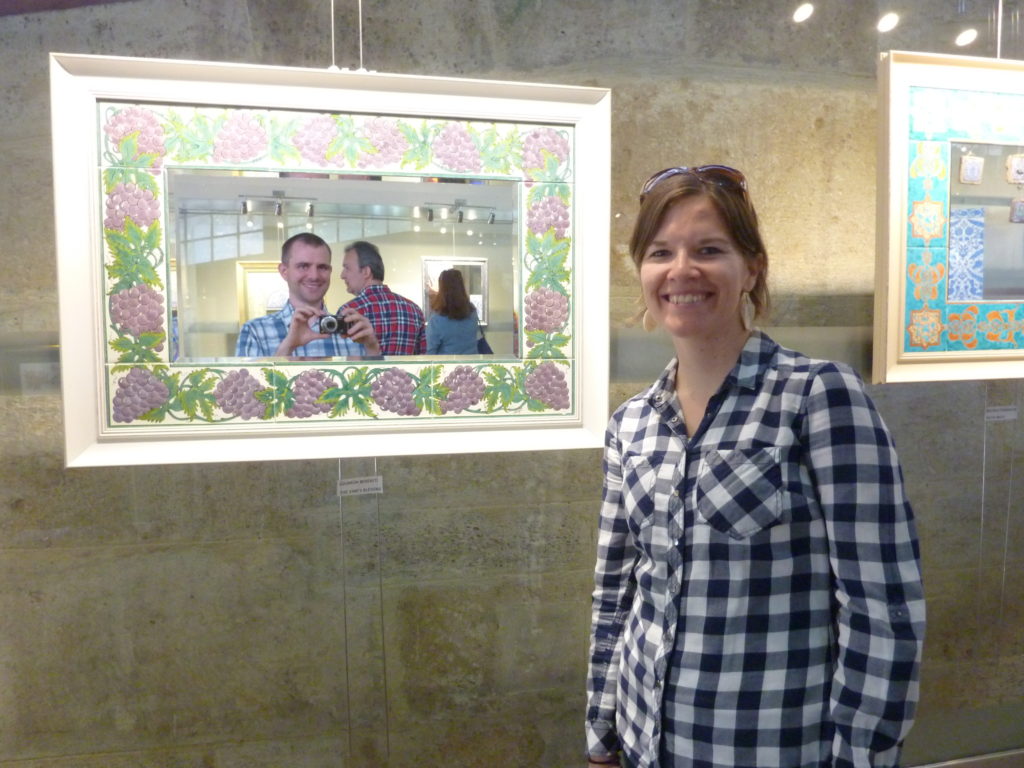
When the Great Fire of Istanbul raged havoc through the city in 1660 (yes, Istanbul beat London to it..), the unfinished mosque was also damaged. The then Imperial architect, Mustafa Ağa suggested that the current Valide Sultan, Turhan Sultan (mother to Mehmed IV), should commission the restoration and completion of the mosque as a piety project. Cleverly he also garnered himself more work by suggesting the addition of a market structure to the mosque complex (külliye); hence the building of that now even more famous landmark, the Spice Bazaar (Mısır Çarşısı). Renovation and construction completed, the mosque was inaugurated in 1665 as ‘The New Sultan’s Mother’s Mosque’ (Yeni Valide Sultan Camii). With time it simply became known as the ‘New Mosque’.
But of course, one of the jewels in the crown of this mosque complex was the secretive Sultan’s Pavilion. Adorned with stunning tiles draping the walls like tapestries, and providing the perfect place to escape the city crowds, gather thoughts before prayer or recline in ceramic glazed peace, even today the Pavilion stuns with its beauty and artistry. In fact, in 2010 Turkey won a European Heritage Award for the Pavilion’s excellent and accurate restoration.
How fitting then to use the Pavilion as a place to exhibit not only art in general, but our modern rendering of an artform directly inspired by those tiles which were crafted for this place all those years ago. Personally I thought it absolutely appropriate that we should show our work in the portico to the grand Pavilion; our work ascends the ramp, but the Pavilion itself is the pinnacle, the destination, the prize. What an honour.
I joined my Hoca on one of the nighttime journeys across the city, ferrying my pieces to hang in the Pavilion. Setting up in twilight, surrounded by hundreds of years of history, in the shadow of the Sultan and beneath turquoise panels painted by the ancient artisan greats, my breath caught in my throat as I drank in the moment. I had been invited into the inner courts of another faith, right in the cultural heart of this powerful city, to take an artist’s place with the shared language and brush of my teacher and friend.
(Video credit: İlhan Özcan)

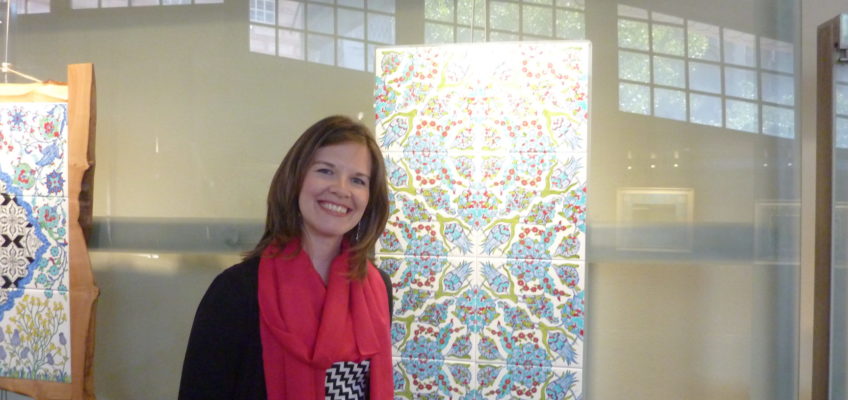
Leave a Reply